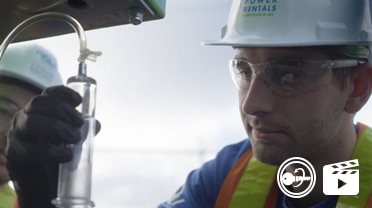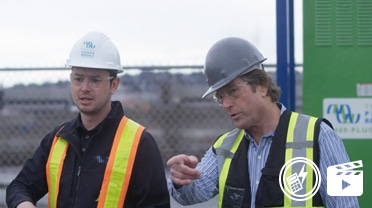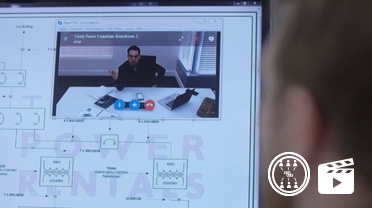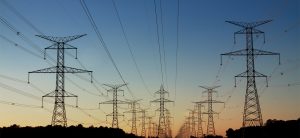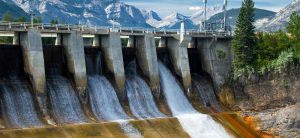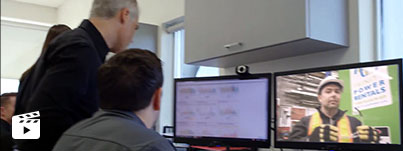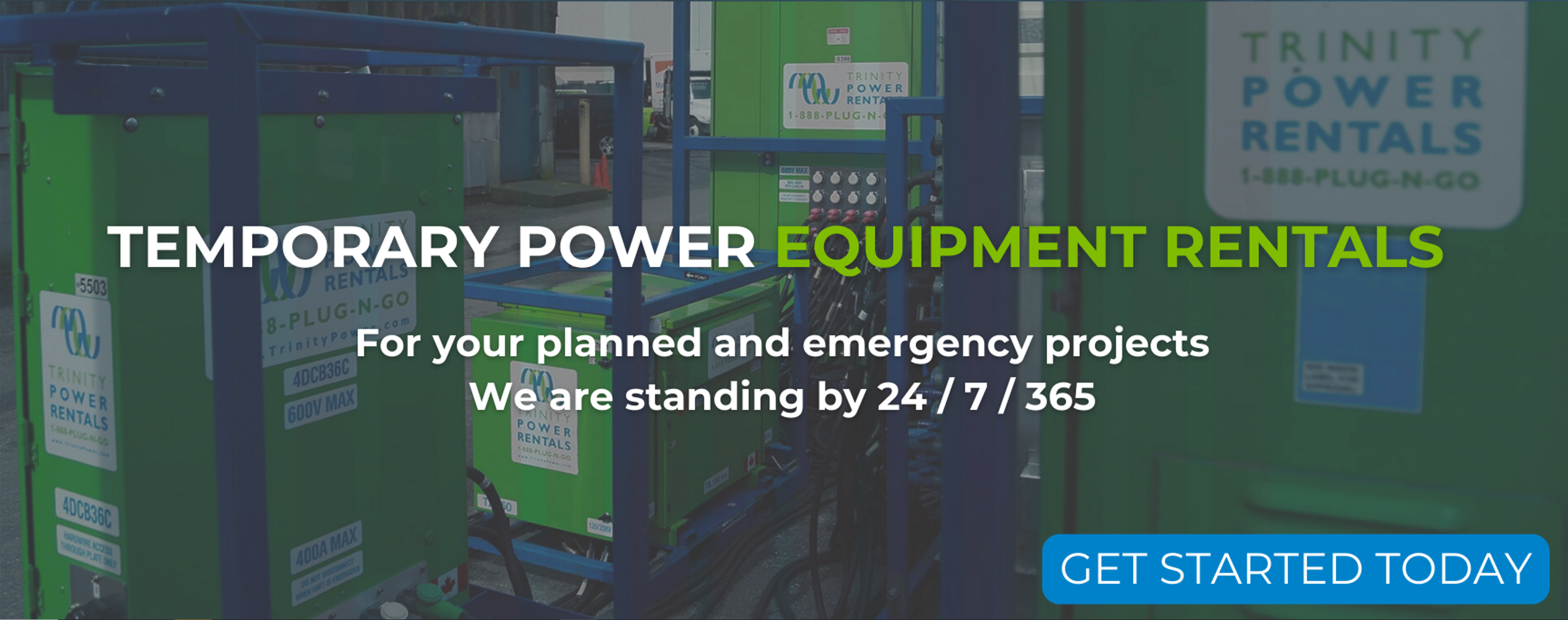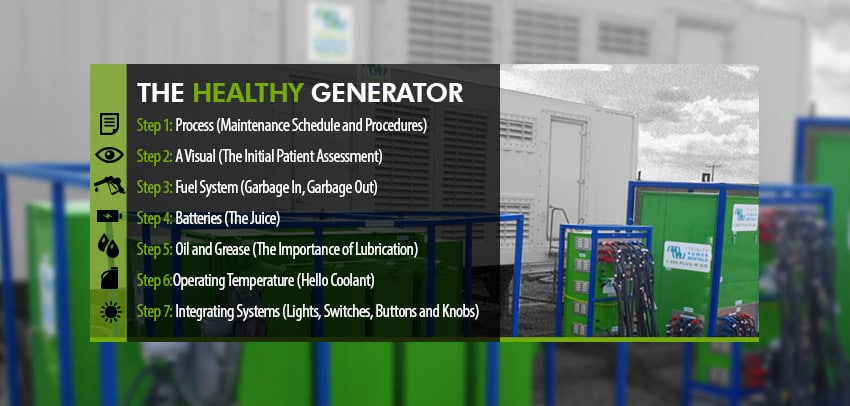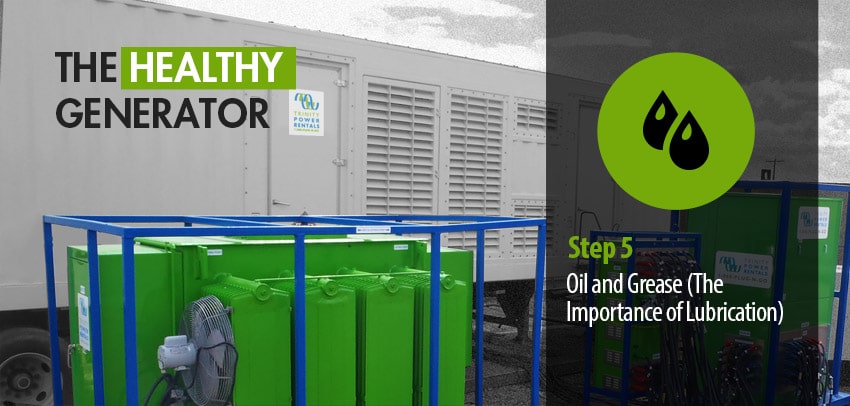- OUR APPROACH
-
COMMITTED TO YOUR SUCCESS
Our approach, developed over decades of experience, is fine-tuned to get the results you want.
We deliver concept-to-completion solutions, designed by temporary power specialists with access to the largest inventory of high-quality power generation and distribution equipment in North America.
-
- Equipment
-
RENTALS
From a wide range of diesel and natural gas generators to transformers, cable, light towers and more, our large rental fleet and extensive vendor network ensure we’ll have the temporary power equipment that your project requires — every time.
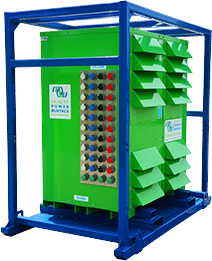
-
- Industries
-
INDUSTRIES WE SERVE
For nearly 20 years, we have been at work powering projects across Canada’s industrial sectors.
Select from this sampling of industries to learn how we can put our expertise to work for you.
VIEW ALL- Projects
- About
-
A PROUD HISTORY. A BRIGHT FUTURE.
From our inception in 1998, we have been building our team on a foundation of excellence. Our team members’ passion, expertise and commitment are what have allowed us to grow into a national company with projects across Canada.
Click on the links to learn more about our history, our team or our career opportunities.
- Blog
- Contact
-
Table of Contents:
- Know Who You’re Working With
- Site Layouts: Cable Routes and Connections
- Standby Generators
- Generator Location, Loads and Installation
- Information Gives You the Control
You’ve assessed your site’s power requirements and worked with a vendor to procure a generator rental that will perform the way you need it to. Now it’s time for the installation.
Most temporary power installations are performed by field technicians – typically mechanics and journeymen electricians with specialized knowledge about on-site power distribution, including generators. But like any profession, no matter how knowledgeable or experienced a field tech is, they require clear and complete information in order to execute on a project as efficiently and safely as possible.
And the person who procures the generator has a great deal of control when it comes to ensuring the technician has access to that information.
Hayat Karimi is one of Trinity Power’s newest Temporary Power Specialists, and as a certified on-site generator technician with nearly a decade of experience, he knows exactly what it takes to perform a seamless installation.
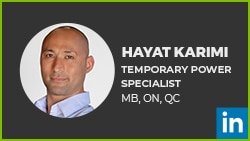
As a generator technician, Karimi was involved in generator installations for a wide variety of industrial, municipal and other projects. His experience includes planned shutdowns and emergency response, wind turbine farms and wastewater treatment facilities, construction projects and major events like the FIFA Women’s World Cup and the PanAm Games. In short, if you can imagine it, Karimi has probably installed a generator there.
We spoke with Karimi about the most common scenarios that generator technicians encounter on the job, and how to ensure they are provided with all the nuanced information they need to perform a timely and smooth installation.
Know Who You’re Working With
When a Project Manager, Property Manager or Electrical Contractor procures a rental generator for their site, typically a generator technician will be involved in the installation process. According to Karimi, the company responsible for providing the technician varies from project to project. “Larger generator rental companies will typically provide a technician to go and install the generator,” he explains. “But in other cases, the technician responsible for the installation will be employed by an Electrical Contractor.”
The kinds of questions a generator technician might have will vary depending on whether they work for the supplying vendor or another 3rd party.
“If the generator tech is working for the vendor, then they will already be familiar with the generator – with its setup and with any customizations they’ve done,” explains Karimi. On the other hand, these techs might be unfamiliar with the site and will need site-specific information to do their job efficiently.
On-site Electrical Contractors, while they’re already familiar with the site, might not be familiar with the generator itself. As Karimi says, “The setup, the look and the configuration between generator manufacturers are completely different.”
With these differences in mind, it is important that whoever is responsible for generator procurement proactively acquire and communicate the information their field technician will need to do their job effectively.
The first step is knowing what that information is.
Site Layouts: Cable Routes and Connections
“The first thing any technician will need to know is what the environment on-site will be like,” explains Karimi. “Temporary power installations can sometimes be like battle zones. There are a lot of unknowns, especially in an emergency situation.”
Reviewing the designed system with the technician is the first step. This includes equipment, ratings and timelines. “Understanding if this is a planned shutdown, for example, or an emergency response due to electrical failure are just some of the key details,” says Karimi. “This helps set expectations on-site.”
Once the lay of the land has been determined, cabling has to be considered. “Cable routing is extremely important in an emergency situation,” explains Karimi. “Most emergencies are not on a construction site, they’re at a residential building or commercial property that has limited access.” In these cases, cable is usually run across walkways or parking lots, which raises a big safety concern that may need to be addressed with fencing or cable mats.
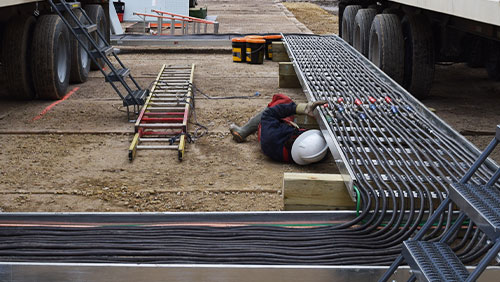
“The next consideration is how we’re going to enter the building with the cables,” says Karimi. “Most electrical rooms are inside the building, and simply propping open a door could cause security issues”. Air vents, cutting holes into walls, or running cables up the exterior of the building are some ways to enter the cables.
“The last thing anyone wants is for the on-site personnel to be unprepared,” explains Karimi. “Clear communication around equipment, timelines and customer expectations can mean the difference in not just hours of on-site time but whether a commercial grocery loses hundreds of thousands in product.”
Standby Generators: Is the Generator Manually Operated or Is It Packaged With An ATS?
If a generator is going to be on standby, another very common question an on-site technician will have is whether or not the generator needs to be operated manually. “There are two types of standby generators,” explains Karimi, “one that’s manually operated by a technician, and one that’s packaged with an automatic transfer switch.”
An automatic transfer switch (ATS) is a device that switches a load between two sources. For example, it auto-starts a generator if utility power is lost or falls below minimum requirements.
If the generator is packaged with an ATS, then the technician needs to know both where the ATS connects to the generator and how the generator will connect to the building’s regular power supply.
The second question is critical. The generator’s battery has to be on in order to receive a signal from the ATS and auto-start when required. In order to maintain this charge, the generator requires shore power.
Says Karimi, “If we don’t apply shore power to the generator, eventually that battery will discharge, the generator will never start.”
Generator Location, Loads and Installation
“It is important to have site information available for a generator tech,” explains Karimi, adding that vendor technicians will not necessarily be familiar with the nuances of a given facility.
Useful site information includes knowing the load requirements so that the technician can calculate how often to refuel the generator. Karimi adds, “All generators have a belly fuel tank onboard but if the generator will be running continuously for a longer term, an external fuel tank may be needed.
Another thing a generator technician needs to know is the generator’s location on-site. Karimi recalls situations as a technician when he would arrive on-site to discover that there was nobody present to inform him of the generator’s location. Or worse, the generator would be secured in a locked area with nobody to let him in.
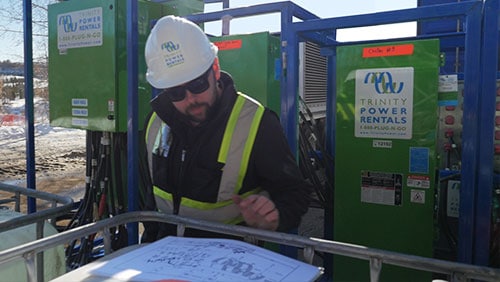
But even before procuring the generator, it is important to know where it is going to be located, in order to help streamline the installation process when it arrives on-site. “Is it going to be under a structure or close to the building?” queries Karimi. “Is it going to be close to an emergency exit?” Depending on where you are planning on putting the generator, special approvals or permits may be required.
Not only that, but typically, the generator will be quite large and will require a lot of space. Exhaust from a large generator emits a fair bit of heat and you need a safe working distance around the generator.
Having this information available up front will enable a field tech who is unfamiliar with your site to navigate installation and maintenance much more efficiently.
Information Gives You the Control
While a generator vendor should typically ask the right questions to ensure everyone has the necessary information, according to Karimi, sometimes they don’t. For Project Managers or Property Managers who are renting a generator, having this information on hand, or asking the right questions to obtain it means having greater control over how smoothly the installation runs.
“It is absolutely necessary to initiate those conversations ahead of time because of the potential for lost time and money,” says Karimi. “If a cable is missing because the correct information wasn’t communicated, not only will you waste time waiting for it to be shipped, but if it’s an emergency situation, you might not even be able to use that generator until that cable arrives.”
Addressing these key details will set the stage for your field tech to do their best work, allowing your temporary power equipment to perform at its full potential.
Related Articles
Subscribe for access to exclusive content


